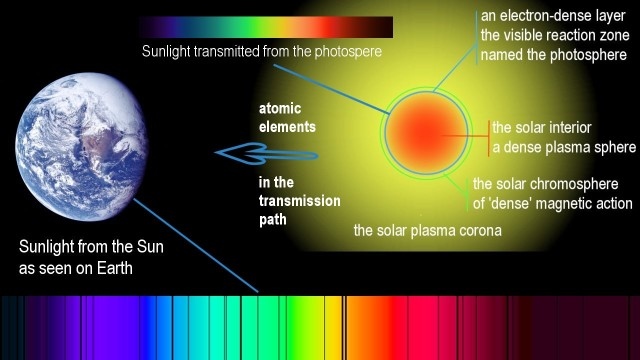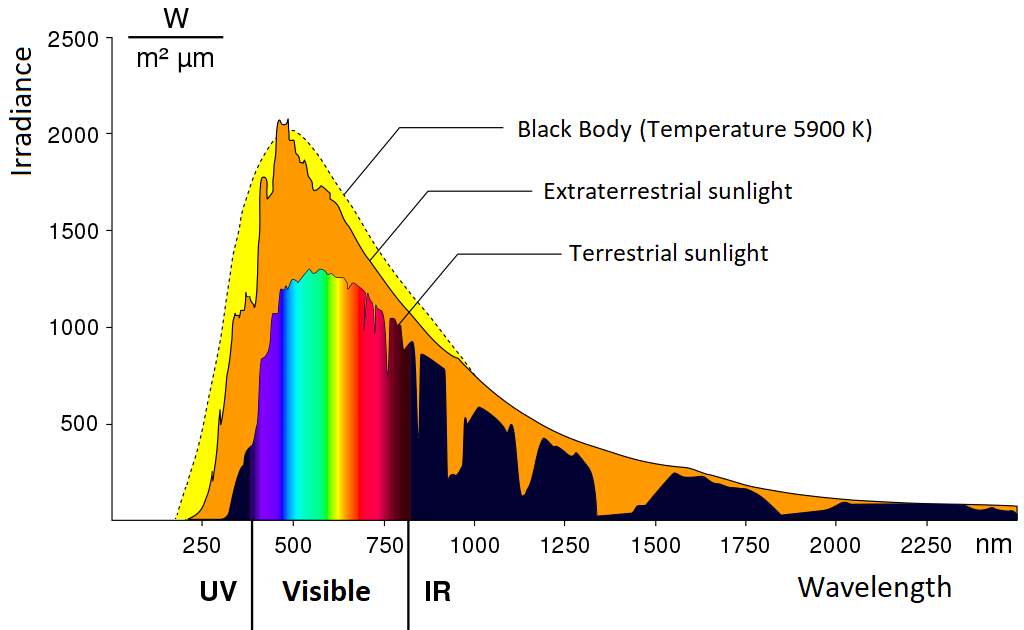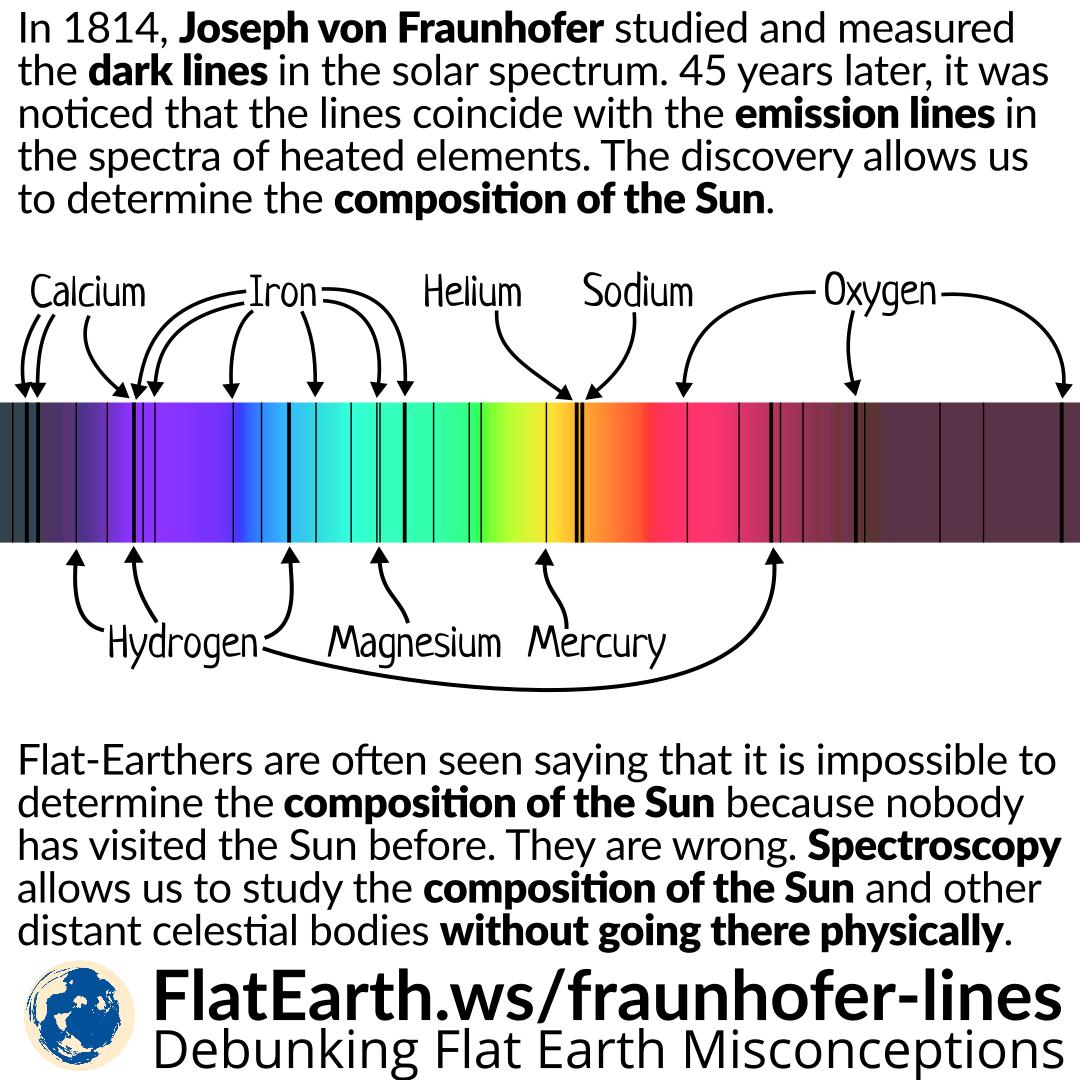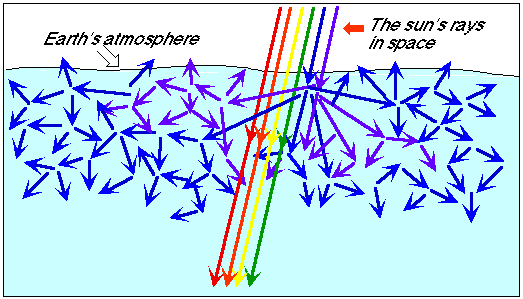The Sun is an incredibly fascinating object in our solar system, and its color is one of the most intriguing aspects of it. The color of sunlight is the result of a complex interaction between the Sun’s emission spectrum and the Earth’s atmosphere. In this article, we will explore the science behind the color of sunlight, including the factors that influence it and how it affects our daily lives.
Introduction:
To begin, it’s important to understand what sunlight is and how it is produced. Sunlight is a form of electromagnetic radiation that is emitted by the Sun. The Sun generates energy through a process called nuclear fusion, in which hydrogen atoms combine to form helium atoms. This process releases an enormous amount of energy in the form of radiation, which includes visible light, ultraviolet light, and infrared radiation.

How the color of Sunlight is produced?
As the light generated by nuclear fusion travels through the Sun’s outer layers, it encounters various elements and molecules that absorb some of the light at specific wavelengths, producing what is known as absorption lines. These absorption lines can be used by astronomers to identify the chemical composition of the Sun and other stars.
Despite the fact that sunlight is composed of many different colors, it appears to be white or yellowish-white to our eyes. This is because our eyes are not able to distinguish the individual colors of light that makeup sunlight. Instead, our eyes perceive sunlight as a single color that is a blend of all the colors in the visible spectrum. One way to observe the individual colors of sunlight is to use a device called a spectrometer. A spectrometer is an instrument that separates light into its component colors and measures the intensity of each color. When sunlight is passed through a spectrometer, it produces a spectrum that is a continuous range of colors from red to violet, with no gaps or breaks in the colors.

The color of sunlight is determined by its emission spectrum, which is the distribution of the different wavelengths of light that it emits. The visible part of the electromagnetic spectrum ranges from about 400 to 700 nanometers in wavelength. This range includes all the colors of the rainbow, with violet having the shortest wavelength and red having the longest.

The Sun emits light across the entire visible spectrum, but not all wavelengths of light are emitted equally. The emission spectrum of the Sun is not continuous but rather consists of a series of lines that correspond to specific wavelengths of light. These lines are known as Fraunhofer lines, named after the German physicist Joseph von Fraunhofer who discovered them in 1814. The Fraunhofer lines are caused by the absorption of specific wavelengths of light by elements in the Sun’s atmosphere, such as hydrogen and helium.

Despite the presence of the Fraunhofer lines, the Sun emits more light in the yellow and green parts of the spectrum than in other colors. This is why the Sun appears yellow to our eyes. However, the color of sunlight is not constant throughout the day or throughout the year. It changes depending on several factors, including the time of day, the season, and the latitude.
Factors affecting the color of the sunlight:
One of the most significant factors that affect the color of sunlight is the Earth’s atmosphere. The Earth’s atmosphere is made up of several layers, each with its own unique composition and properties. The layer closest to the Earth’s surface is the troposphere, which extends up to about 10 kilometers (6 miles) above the surface. The troposphere is where most of our weather occurs, and it contains a significant amount of water vapor and other gases that can affect the color of sunlight.
The Blue color of the sky:

One of the primary ways that the Earth’s atmosphere affects the color of sunlight is through a phenomenon called Rayleigh scattering. This occurs when sunlight enters the Earth’s atmosphere and interacts with the molecules in the air, such as oxygen and nitrogen. The shorter wavelengths of light, such as blue and violet, are scattered more than the longer wavelengths, such as red and orange. This is why the sky appears blue during the daytime – the blue light is scattered in all directions, making the sky look blue.

The Orange Color of the sky:
During sunrise and sunset, the angle of the Sun in the sky causes the sunlight to travel through a thicker layer of the Earth’s atmosphere. This causes even more of the blue light to be scattered, leaving only the longer-wavelength, yellow, and orange light to reach our eyes. This is why the Sun appears more yellow or orange during these times of the day. The amount of atmospheric scattering also varies depending on the season and latitude. At higher latitudes, such as near the poles, the angle of the Sun in the sky is much lower, which causes the sunlight to travel through a thicker layer of the atmosphere. This results in more atmospheric scattering and a more reddish or orange hue to the sunlight.

The White Color of the Sky:
During the summer months, when the Sun is higher in the sky, there is less atmospheric scattering and the sunlight appears more white or blue-white in color. This is because the Sun’s light is passing through less of the Earth’s atmosphere, which means that there are fewer particles for the light to scatter off of.

The Browinish-yellow color:
The color of sunlight can also be affected by pollution in the atmosphere. Pollution can absorb and scatter different wavelengths of light, leading to a hazy or brownish appearance in the sky. This is especially noticeable in urban areas with high levels of pollution.

Effects of the color of sunlight:
On the other hand, exposure to natural light, particularly in the morning, can help regulate our circadian rhythms and improve our sleep patterns. This is why many people use light therapy, which involves exposure to bright light in the morning, to help treat sleep disorders such as seasonal affective disorder.
The color of sunlight can also affect plant growth and photosynthesis. Plants use different wavelengths of light for different purposes, with blue light being important for vegetative growth and red light being important for flowering and fruiting. This is why some indoor gardeners use specific types of grow lights, which emit different wavelengths of light, to help optimize plant growth.
Recommended Articles:
Clinical Laboratory Thermometers: Introduction, Principles, Types And Applications
Clothes: Introduction, Types, Synthetic, Summer And Winter
Cloud Formation: Introduction, Formed, Experiment And Important
Coefficient of Linear Expansion: Expansion, Materials, and Examples
Coherent Sources: Production, Examples, Need and Characteristics
Earth’s atmosphere contains a variety of gaseous molecules and dust particles that scatter shorter to bigger wavelengths of color from sunlight when the white light travels through it. During the day, it scatters violet and blue colors leaving yellowish sunlight. The sky appears blue to the human eye as the short waves of blue light are scattered more than the other colors in the spectrum, making the blue light more visible. During sunrise and sunset, the angle of the Sun in the sky causes the sunlight to travel through a thicker layer of the Earth's atmosphere. This causes even more of the blue light to be scattered, leaving only the longer-wavelength, yellow, and orange light to reach our eyes. This is why the Sun appears more yellow or orange during these times of the day. The Sun produces light through a nuclear reaction called fusion. As atoms of hydrogen combine to form helium, they produce vast amounts of heat and light. Chromatography is a separation technique used to separate and purify individual components of a mixture. The term "chromatography" comes from the Greek words "chroma," meaning color, and "graphy," meaning writing or recording. There are many types of chromatography, For example, Thin layer chromatography, Liquid chromatography, etc. In this article let us discuss column chromatography. Color of Sunlight FAQs
Why is sunlight yellow?
Why the sky looks blue?
Why does the sky look orange in the evening?
How does the sun produce light?
